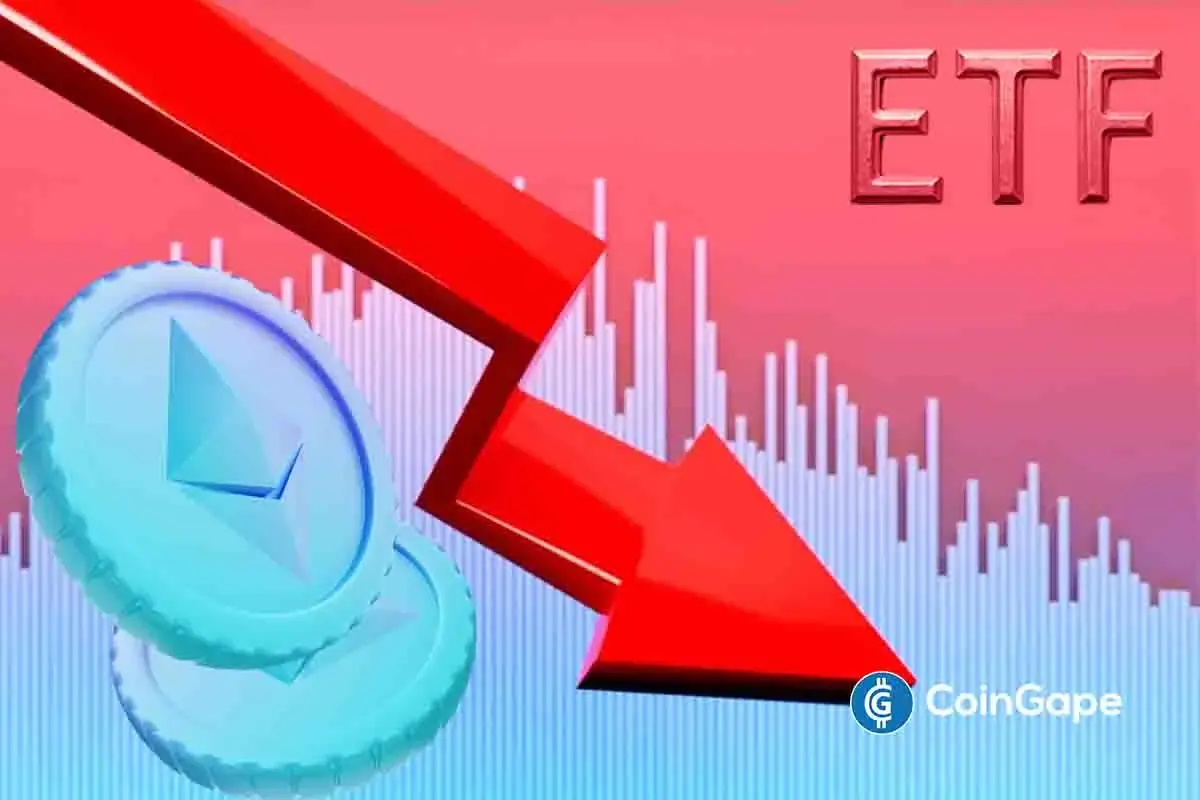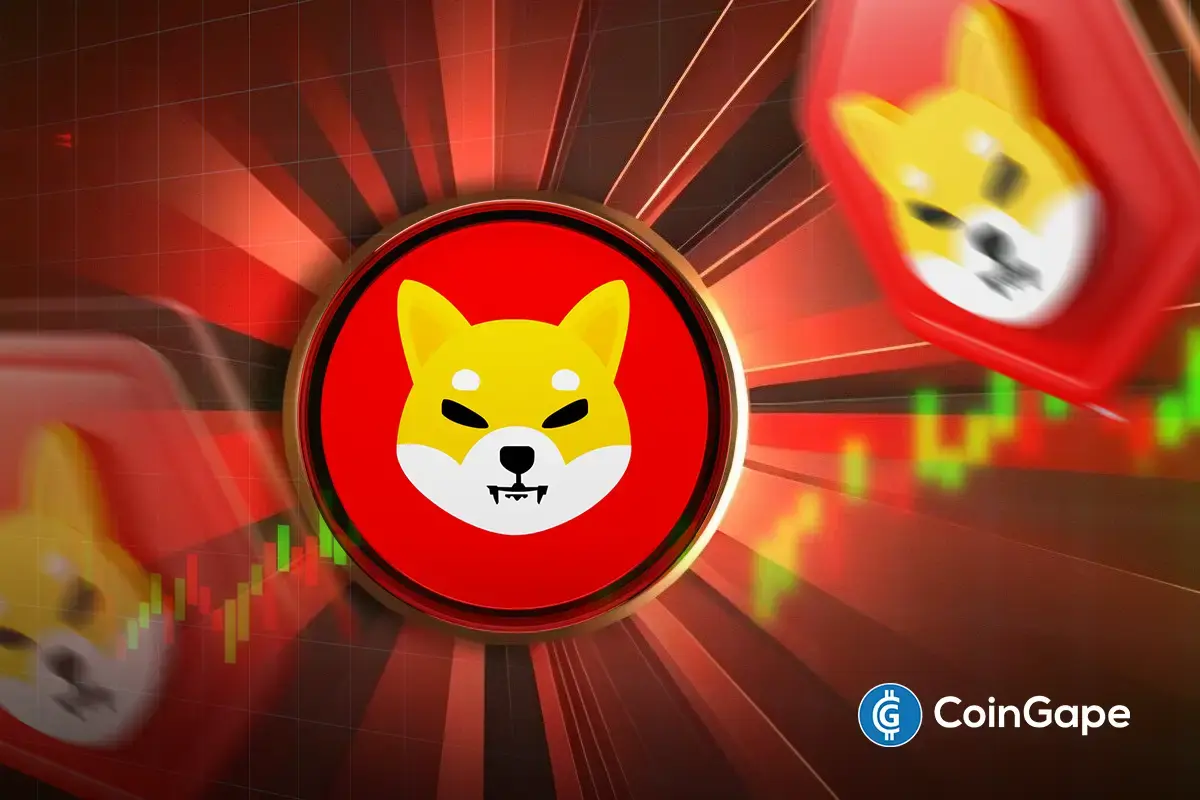Market
Web3 Projects Adjust to Market Chaos


Crypto and global markets are reeling from the escalating trade war sparked by President Trump’s latest tariffs. Bitcoin, Ethereum, and Solana have plummeted this week, sending Web3 projects into a tailspin.
BeInCrypto contacted Shane Molidor, founder of Forgd, which has shepherded over 1,000 token launches. The former Gemini business development associate explains how fledgling ventures that once relied on a 2025 bull market adjust strategies and survival tactics.
Market Turmoil Forces Web3 Projects to Rethink Token Launches
Molidor unpacked how Web3 teams are rethinking everything from airdrops to tokenomics. Citing retail exhaustion that has collided with this week’s crypto market panic, he says demand for new tokens is dimming.
“Launching in these conditions risks a flop, and that’s a death knell for projects needing momentum,” he started.
Most projects try to time their token generation events (TGEs) with a bull market to ride speculative retail demand. When the macro market tanks, like it has this week, they hesitate to list.
Poor price performance scares off future investors. Token launches, which once drew excitement, are now becoming high-risk gambles. The market conditions are forcing many to delay or reconsider their approaches.
“The pressure is building, and with major cryptocurrencies like Bitcoin and Ethereum taking a hit, teams are wary of entering the market with new tokens,” Molidor adds.
Airdrops Under Fire: From Hype Machine to Risky Proposition
Crypto airdrops, once a go-to for user acquisition and buzz, are also under fire. Molidor notes that founders have become more cautious.
“Big airdrops often trigger sell pressure that kills TGE buzz,” he says.
Exceptions like Solana-based Jito (JTO) airdrop aligned well with market timing and community engagement, passing as outlier successes. Amidst prevailing bearish sentiment, however, the trend is shifting toward more targeted reward mechanisms that focus on filtering out speculative traders.
“Founders are moving toward methods like vesting periods, Sybil resistance, and eligibility filters to route tokens to crypto-native users rather than to people just looking to cash out immediately,” Molidor adds.
This suggests utility is crucial now, with the Forgd executive articulating that airdrops without a clear narrative and use case will fall flat.
Tokenomics: The Return of Low Float, High FDV Models
Tokenomics is also undergoing a makeover. Molidor notes that low float, high fully diluted valuation (FDV) strategies are back in fashion as projects attempt to curb sell-offs from airdrop dumpers. These models limit the circulating supply at launch, giving the impression of high value.
“It’s an illusion of strength. Early price pops distort market caps, but thin liquidity and front-loaded unlocks alienate both retail and institutional investors,” Molidor cautions.
This approach can appear predatory, enticing retail investors only to leave them with little liquidity and big insider exits.
However, Molidor notes that the market is wise to these games now. Projects must ensure that tokenomics are well-designed to foster long-term growth and avoid manipulation. Instead of chasing short-term hype, Molidor urges founders to focus on strategies that promote real user adoption.
“The key is balance. You want tokenomics that encourage long-term engagement while still protecting against early sell pressure,” he explained.
The Funding Drought: Crowd Funding and Angel Investors Step In
Molidor also demonstrated cognizance that the venture capital playing field has shifted dramatically. With funding tightening over the last 12 months, many Web3 projects are turning to alternative sources of capital.
Crowdfunding platforms like Legion and Echo are gaining traction among perceptive retail investors. They offer smaller, more flexible funding rounds. However, these rounds often cannot replace the scale of traditional venture capital.
“Crowdfunding is definitely on the rise, especially for earlier-stage projects. However, while crowd-funding platforms are becoming a vital tool, they are not a one-stop shop. Projects will still need larger rounds of VC funding to scale and deliver on their long-term visions,” he noted.
In response, venture capitalists are doubling down on early-stage equity and token stakes to offset dilution from later crowdfunding efforts.
According to Molidor, this strategy is creating an interesting dynamic in the funding arena, with VCs pushing for larger ownership stakes earlier in the process.
Compared to previous bear markets, he says this adjustment is a return to fundamentals but with more sophistication. In past bear markets, projects would typically delay their launches or aggressively cut costs. However, Molidor says that founders are taking a more nuanced approach.
“Delays and cost-cutting are still part of the playbook, but what’s different now is the level of sophistication in how teams manage their tokenomics, airdrops, and launch strategies. The cost of a mispriced launch is brutal reputationally and economically. Retail is fatigued, VCs are more hands-on, and communities are quicker to call out misaligned interests,” he explained.
Based on these, Molidor and his team at Forgd advise projects to take a surgical approach. The most successful projects take the time to understand their community, create value, and resist the urge to chase short-term hype.
“Narrative-driven airdrops, intentional community sales, and valuations built to last,” he advises.
A Market Test of Web3’s Resilience
Molidor says that the next six months will test Web3’s resilience. The sharpest projects will weather the storm as Trump’s tariffs upend the early-2025 bull market dreams.
“Token design is like capital structure now. It’s deliberate, contextual, and enduring—that’s what wins,” Molidor concludes.
For founders, it is adapt or die. For investors and users, it is a front-row seat to crypto’s latest crucible. Only the most thoughtful and strategic projects will succeed in this challenging market environment.
Disclaimer
In adherence to the Trust Project guidelines, BeInCrypto is committed to unbiased, transparent reporting. This news article aims to provide accurate, timely information. However, readers are advised to verify facts independently and consult with a professional before making any decisions based on this content. Please note that our Terms and Conditions, Privacy Policy, and Disclaimers have been updated.
Market
Despite an 18% Drop, XRP’s Exchange Supply Hits Lows—Bullish Setup Ahead?

Reason to trust

Strict editorial policy that focuses on accuracy, relevance, and impartiality
Created by industry experts and meticulously reviewed
The highest standards in reporting and publishing
Strict editorial policy that focuses on accuracy, relevance, and impartiality
Morbi pretium leo et nisl aliquam mollis. Quisque arcu lorem, ultricies quis pellentesque nec, ullamcorper eu odio.
XRP has been trading under pressure in recent weeks, losing much of the momentum it built during its late 2024 to early 2025 rally. After reaching highs above $3.40, the asset has experienced an 18.3% decline over the past month, reflecting broader market softness.
At the time of writing, XRP trades significantly below its peak at a price of $2.06, with subdued investor activity and falling market participation across both spot and derivatives markets.
Related Reading
XRP On-Chain Activity Slows, But Price Remains Relatively Stable
Amid XRP’s decline, a CryptoQuant analyst known as EgyHash has recently shared his analysis on the altcoin in a post titled, “XRP’s Market Paradox: With Ledger Activity Dipping 80%, Is a Rebound on the Horizon?”
According to EgyHash, XRP’s on-chain and futures market data presents a mixed picture—declining activity but resilience in price. EgyHash noted that XRP Ledger activity has fallen sharply since December, with the percentage of active addresses down by 80%.
Similar declines have been observed in the futures market, where open interest has dropped roughly 70% from its highs, and funding rates have occasionally turned negative.

He added that the Estimated Leverage Ratio, which gauges average user leverage by comparing open interest to coin reserves, has also dropped significantly.
Despite these indicators pointing to weakening momentum, the altcoin’s price has only declined about 35% from its peak. This is a milder correction compared to other assets such as Ethereum, which has fallen roughly 60% over the same period.
Additionally, the altcoin’s Exchange Reserve has continued to decline, reaching levels last observed in July 2023. Lower reserves typically suggest that fewer tokens are available for immediate sale, a factor that can help support prices during market downturns.

According to EgyHash, this trend, along with relatively stable pricing, could indicate growing long-term confidence in the asset.
Institutional Developments Could Strengthen Market Sentiment
While on-chain metrics remain a focus, institutional developments may also play a role in shaping XRP’s future trajectory. Hong Kong-based investment firm HashKey Capital recently announced the launch of the HashKey XRP Tracker Fund—the first XRP-focused investment vehicle in Asia.
Backed by Ripple as the anchor investor, the fund is expected to transition into an exchange-traded fund (ETF) in the future. The initiative is designed to attract more institutional capital into the XRP ecosystem.
HashKey Capital is launching Asia’s first XRP Tracker Fund—with @Ripple as an early investor.
This marks a major step in expanding institutional access to XRP, the third-largest token by market cap. 🧵👇
— HashKey Capital (@HashKey_Capital) April 18, 2025
HashKey Capital has also indicated that this collaboration with Ripple could lead to further projects, including tokenized investment products and decentralized finance (DeFi) solutions.
Related Reading
Vivien Wong, a partner at HashKey, emphasized the strategic value of integrating Ripple’s network with regulated investment infrastructure across Asia.
Although the altcoin faces near-term pressure, long-term developments, including decreasing exchange reserves and rising institutional interest, may support its recovery as the broader market stabilizes.
Featured image created with DALL-E, Chart from TradingView
Market
Matchain’s Petrix Barbosa Talks the Future of Digital Identity


In an engaging session during Paris Blockchain Week, BeInCrypto caught up with Petrix Barbosa, the innovative mind behind Matchain, a blockchain venture that’s reshaping how digital identity and data sovereignty are approached.
Barbosa, who transitioned from a successful career as a venture capitalist, where he managed investments across 250 projects, brings a wealth of experience and a unique perspective to the blockchain landscape. Petrix Barbosa’s insights reveal a compelling vision for the future of blockchain, focusing on user empowerment and innovative use of technology to solve enduring problems in digital identity and data management.
Petrix Barbosa Discusses Matchain and its Mission
Matchain is a layer 2 blockchain platform that primarily addresses the challenges of identity and data sovereignty. Our mission is to empower users by giving them control over their digital identities and data, thus ensuring that they’re the primary beneficiaries of their online presence.
Barbosa on His Pivot from Venture Capital
In my time as an investor, I witnessed many great ideas fail to reach their potential due to the lack of a substantial user base or poor market timing. This inspired me to transition from funding projects to creating a platform that not only serves my vision but also provides tangible solutions to widespread issues in the blockchain community—primarily, user engagement and application.
Matchain’s Innovations in the Area of Identity Sovereignty
Matchain introduces a novel approach to managing digital identity. Unlike traditional models where user data is siloed across various platforms, Matchain allows users to have a single digital identity that spans across both Web2 and Web3. This is crucial for enabling a seamless transition and interaction between these two worlds.
How Matchain Integrates Existing Web2 Infrastructure
Our platform acts as a bridge between the decentralized ecosystem of Web3 and the more traditional Web2 infrastructure. By allowing users to manage their digital identities across both platforms, we facilitate a smoother interaction that enhances user experience while maintaining high security and trust.
Future Developments From Matchain
Looking ahead, we aim to expand our user base significantly. Currently, we are backed by strategic partnerships, like the one with Paris Saint-Germain, which not only broadens our exposure but also integrates our technology into mainstream applications.
In the next two years, we plan to onboard millions of users, leveraging our innovative solutions to enhance their digital interactions.
Barbosa on Unique Challenges in Developing Matchain
The biggest challenge was shifting the focus from simply creating a blockchain solution to ensuring it was user-centric and capable of addressing real-world problems. This involved integrating AI to manage and analyze data effectively, ensuring that our platform could deliver personalized and contextually relevant experiences to users.
Matchain Over the Next Five Years
In five years, I envision Matchain at the forefront of blockchain technology, leading the charge in digital identity management and data sovereignty. Our platform will likely become a critical tool for users and companies looking to navigate the complexities of the digital age securely and efficiently.
Disclaimer
In compliance with the Trust Project guidelines, this opinion article presents the author’s perspective and may not necessarily reflect the views of BeInCrypto. BeInCrypto remains committed to transparent reporting and upholding the highest standards of journalism. Readers are advised to verify information independently and consult with a professional before making decisions based on this content. Please note that our Terms and Conditions, Privacy Policy, and Disclaimers have been updated.
Market
Base Launches Strong, But Content Coins Draw Doubt

Content Coins are a new trend gaining attention in the crypto space, especially on Base. They are positioned as digital content with value driven by culture and virality. Supporters see them as a new form of expression.
Critics say they’re just meme coins with a different name. Base is pushing the idea forward, hoping it helps the chain stand out from the rest.
Are Content Coins Really Different From Meme Coins?
Content coins are a new concept gaining traction within crypto communities, especially on Base chain. According to Base founder Jesse Pollak, a content coin “represents a single piece of content,” with the core idea being that the coin is the content and the content is the coin — no more, no less.
These tokens are often created in a specific context, either on platforms like Zora.
Essentially, creators design them to function as standalone pieces of digital content, driving the token’s value through cultural impact, virality, or meme-worthiness—rather than any utility or fundamental backing.

Despite the growing popularity of the term, not everyone is convinced. User Kash (@kashdhanda) dismissed the label, saying, “contentcoins are a silly name for memecoins”. He also pointed out that “memecoins are actually closer to financial content than they are to finance.”
David Tso (@davidtsocy), who works at Base, brings a more supportive spin, comparing content coins to “Instagram posts and TikToks that show their value in real time.”
Is Base Is For Everyone Just Another Meme Coin?
Base is for everyone was the first content coin officially launched and promoted by Base. It made an explosive debut, with a market cap nearing $18 million within its first few hours.
Shortly after its peak, the token plummeted nearly 75%. Since then, it has shown signs of recovery, with its market cap now hovering around $9.6 million.
The coin has gained significant traction in terms of activity, currently boasting nearly 21,000 holders, over 29,000 transactions in the last 24 hours, and a daily trading volume close to $9 million.

Base is using this momentum to push a broader narrative: that all content should live on-chain. Base is actively leveraging this philosophy, framing content coins as a new form of internet-native expression where each token represents a piece of digital culture stored permanently on the blockchain.
Yet, despite this push, Base is for everyone remains the only content coin to break out meaningfully—most others haven’t crossed the $100,000 market cap threshold. While the concept aims to separate itself from typical meme coins by embedding value in cultural relevance rather than pure speculation, many remain unconvinced.
Critics argue that content coins are merely meme coins in new packaging. Still, if the trend takes off, it could position Base to outperform other chains like Solana. It would do this by capturing this narrative and driving unique user activity to its ecosystem.
Disclaimer
In line with the Trust Project guidelines, this price analysis article is for informational purposes only and should not be considered financial or investment advice. BeInCrypto is committed to accurate, unbiased reporting, but market conditions are subject to change without notice. Always conduct your own research and consult with a professional before making any financial decisions. Please note that our Terms and Conditions, Privacy Policy, and Disclaimers have been updated.
-

 Market11 hours ago
Market11 hours agoPi Network Roadmap Frustrates Users Over Missing Timeline
-

 Market10 hours ago
Market10 hours agoSolana (SOL) Price Rises 13% But Fails to Break $136 Resistance
-

 Market23 hours ago
Market23 hours agoVietnam Partners with Bybit to Launch Legal Crypto Exchange
-

 Market22 hours ago
Market22 hours ago100 Million Tokens Could Trigger Decline
-

 Altcoin19 hours ago
Altcoin19 hours agoEthereum ETFs Record $32M Weekly Outflow; ETH Price Crash To $1.1K Imminent?
-

 Ethereum17 hours ago
Ethereum17 hours agoEthereum Price Stalls In Tight Range – Big Price Move Incoming?
-

 Market17 hours ago
Market17 hours agoHow $31 Trillion in US Bonds Could Impact Crypto Markets in 2025
-

 Altcoin22 hours ago
Altcoin22 hours agoRipple CEO Brad Garlinghouse Drives XRP’s Global Expansion; Know How
























